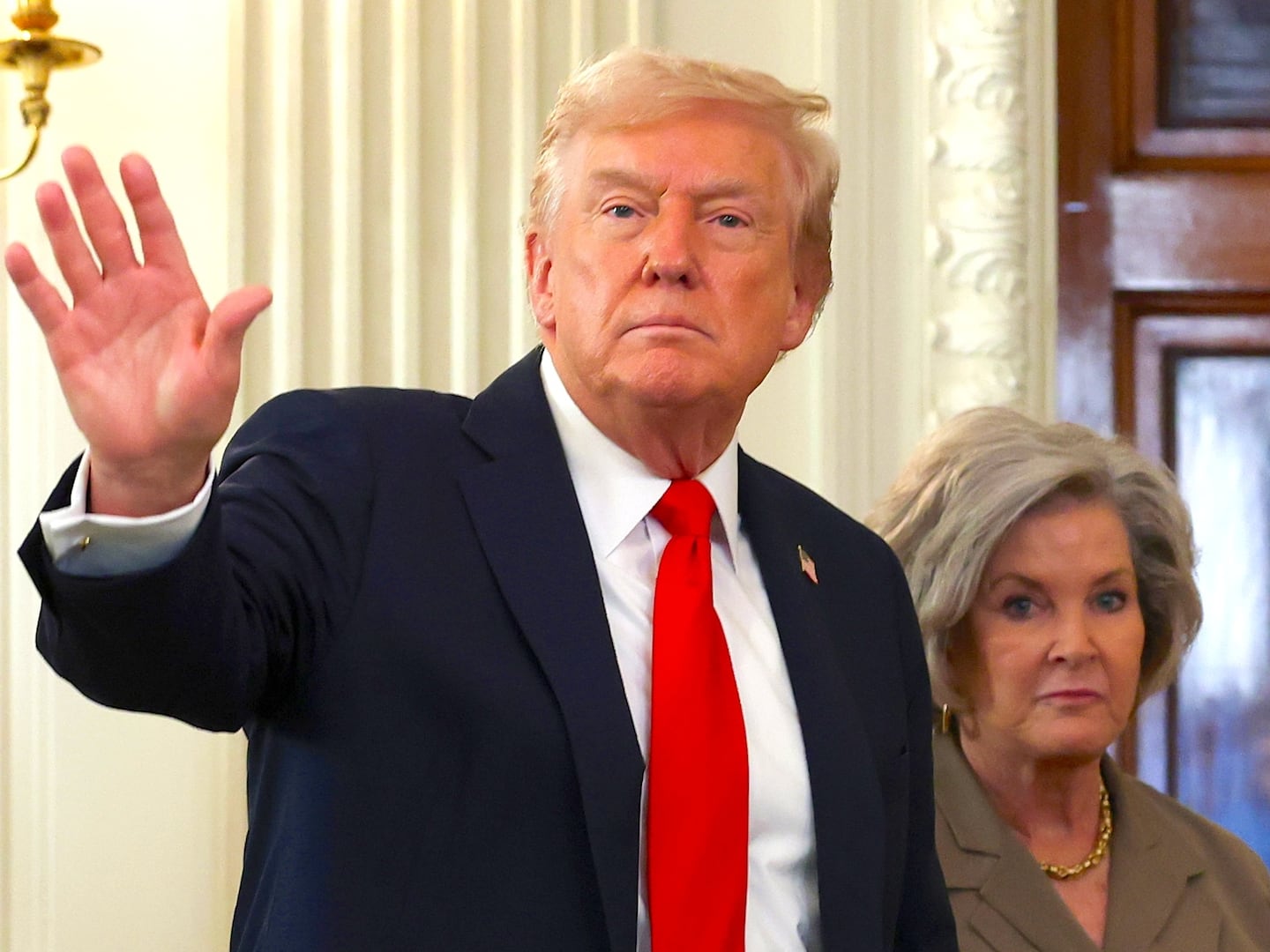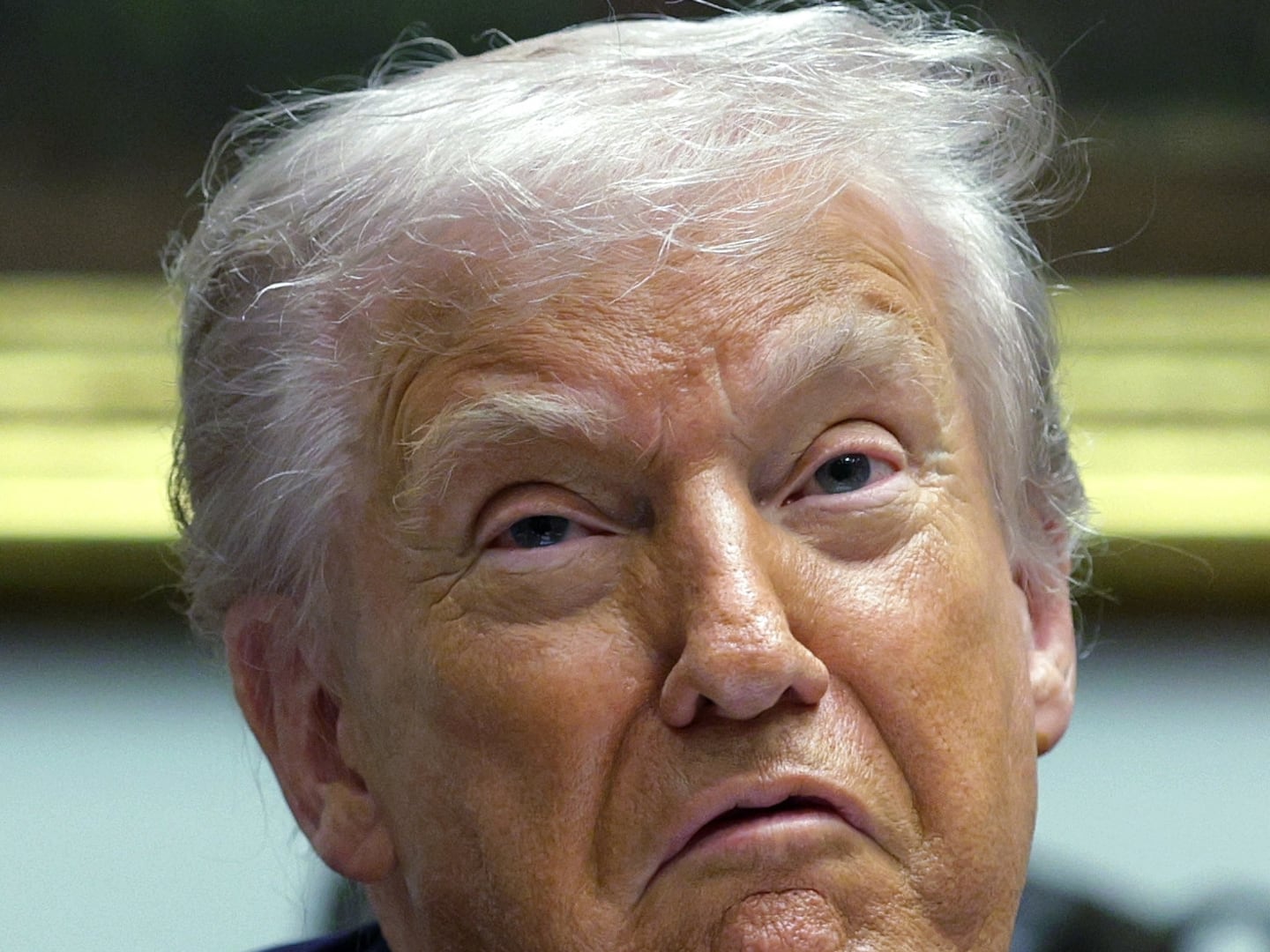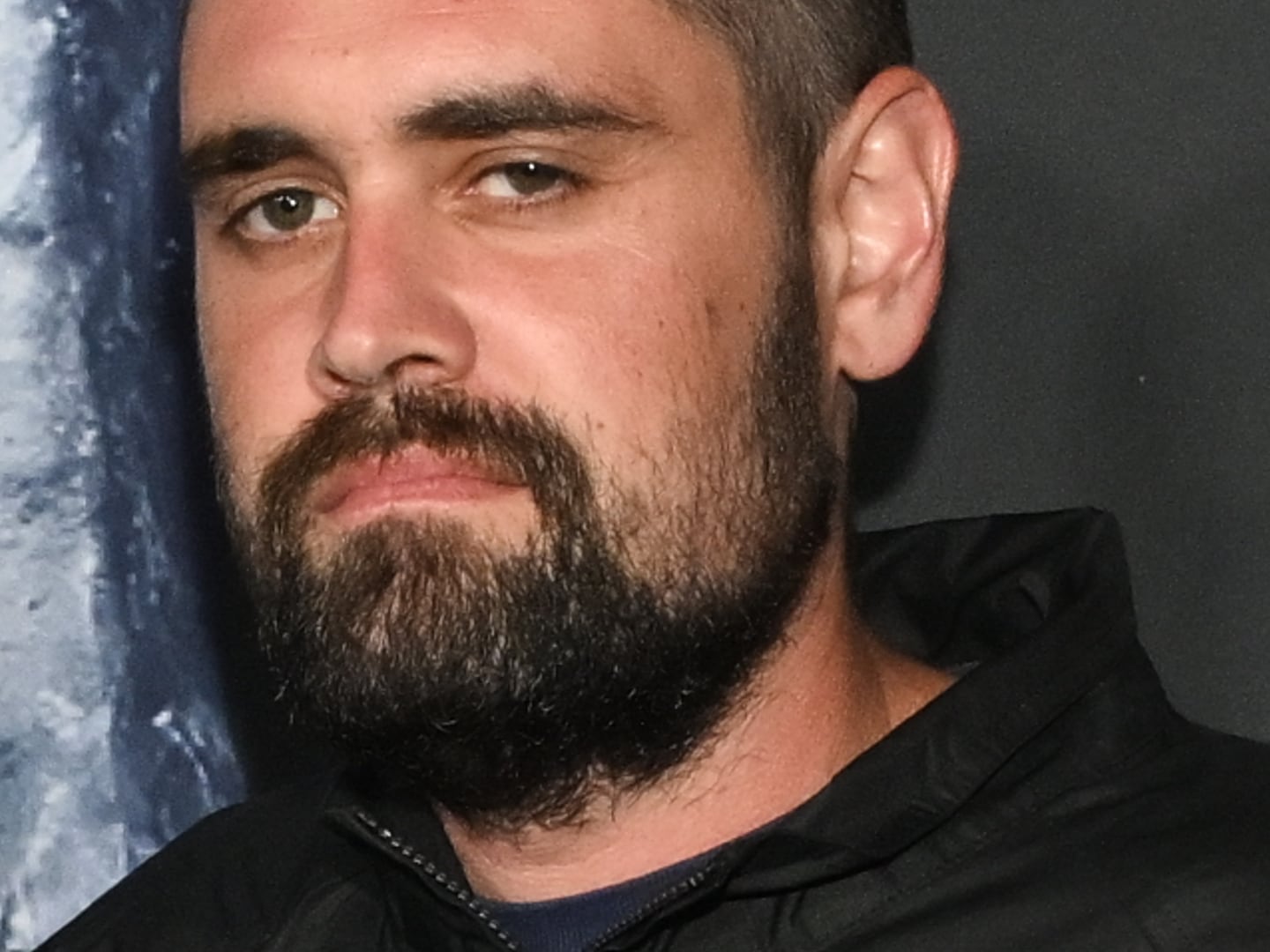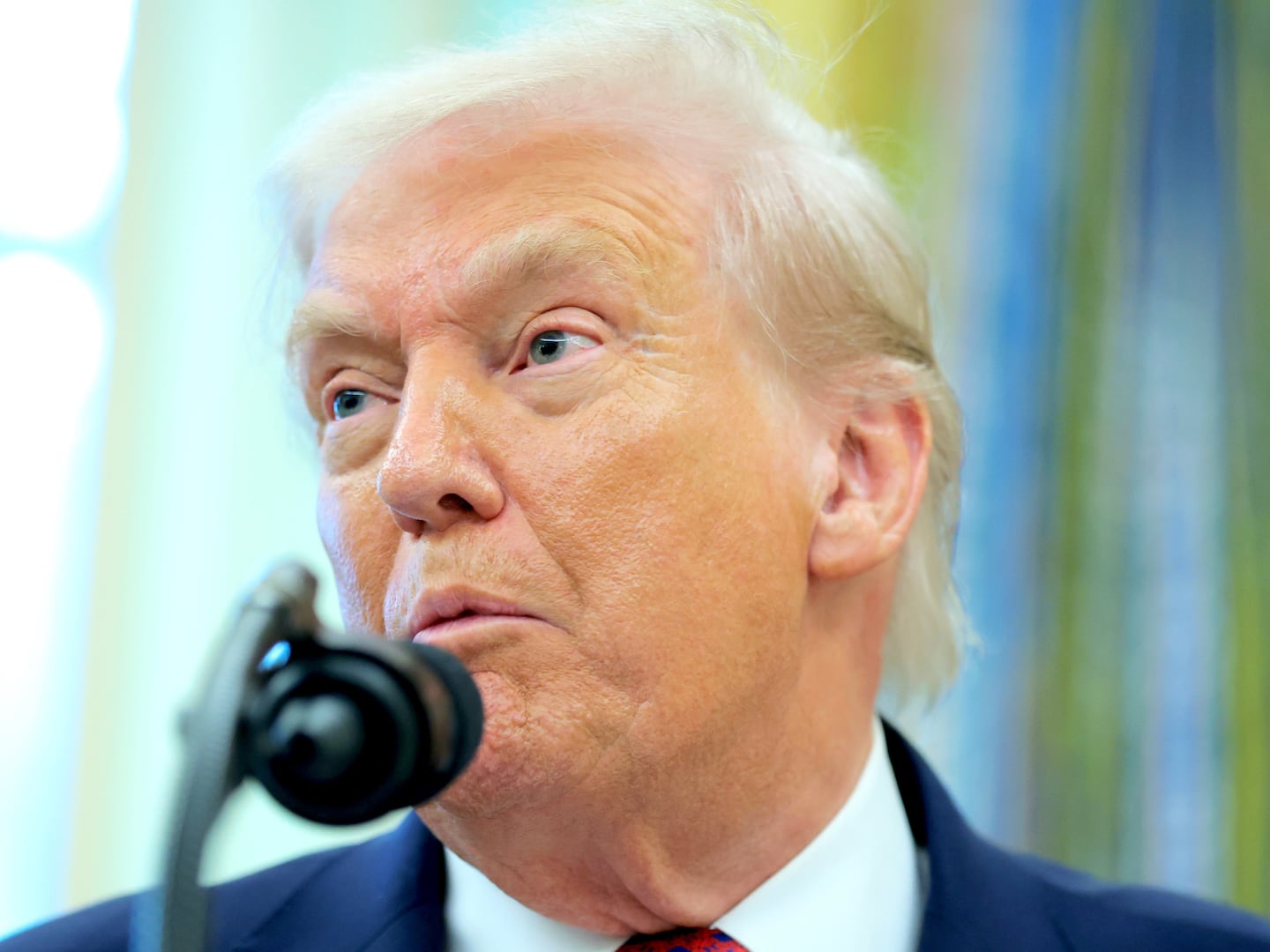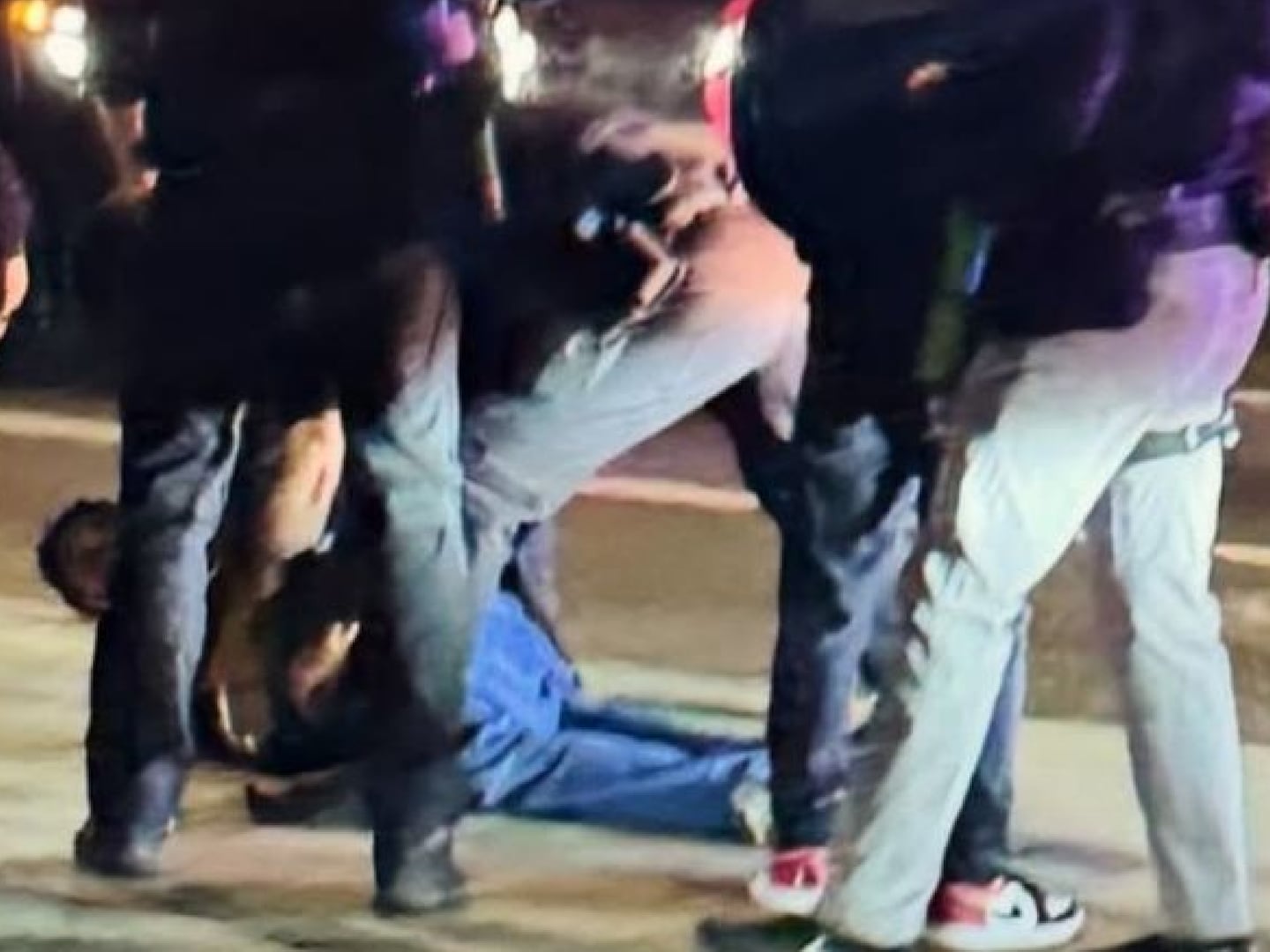The Hunger Games has always been for kids. For that reason, it’s never really been taking that seriously. With The Hunger Games: Mockingjay—Part 1, which hits theaters Friday, that’s about to change.
Our Girl on Fire is all grown up, and the blaze she’s kindling is the franchise’s darkest, most gruesome, most mature one yet.
You could, of course, argue that The Hunger Games has always been mature. After all, the franchise kicks off with a government-sponsored reality-TV competition in which 12 teenagers are forced to fight each other to the death, in order to remind the country’s disenfranchised citizens that Big Brother is really in charge.
But the YA branding of Suzanne Collins’s novels, combined with the celebration of steely role model Katniss Everdeen as the heroine and the pulp silliness of her Twilight-branded love triangle, caused the series—and its ensuing feature films—to be written off as juvenile, lumped in with the likes of Twilight and Harry Potter.
There was handwringing, sure, about how the first Hunger Games film would translate the book’s disturbing kid-on-kid murder to a film that’s still tame enough and age-appropriate enough for the franchise’s legions of young fans to escape screenings without being scarred for life.
Through polarizing—though, I think, clever—shaky handcam shooting of the most brutal, violent scenes, the film managed to have its cinematic cake and eat it, too, capturing both the carnal spirit of the Hunger Games’ violence without overly fetishizing the actual carnage.
The movie’s sequel, Catching Fire, essentially replicates the first film’s narrative—12 tributes drafted into the Hunger Games must once again fight to the death—but ups the ante on the bleak unfairness of it all by culling those tributes from the pool of victors and survivors of previous games.
There was a change in directors (Gary Ross out, Francis Lawrence in) and an increase in budget (upped from $78 million to $130 million), and the result was a shift from an action film with indie roots that put a haunting cinema vérité lens to government corruption and youth violence to a more polished, sanitized Hollywood popcorn blockbuster.
Neither of those films, though, felt as twisted, as graphic, and as much like it had something to say as Mockingjay—Part 1 does. Neither, too, was as chilling, as affecting, or, at times, as much of a slog. From this supposedly juvenile book franchise comes a movie that is, very much so, for adults: a meditation on the power of propaganda, the helplessness of tyranny, patience in storytelling, and, most of all, death.
So much death.
When we reunite with heroine Katniss Everdeen (Jennifer Lawrence) she is still reeling from being rescued from a second trip to the Arena to compete in the Hunger Games. She had just shot her arrow at an electric force field, an apparently society-changing act of defiance.
“When you fired your arrow at the force field, you electrified a nation,” President Coin (Julianne Moore) tells her. Coin is one of her saviors, the head of District 13 and the leader of the rebels who had been plotting a revolution against the oppressive Capitol—and who planned, unbeknownst to Katniss, to use her as the face of the war.
Not rescued along with Katniss, however, is her sort-of boyfriend Peeta (Josh Hutcherson), with whom she’s allied herself in both Hunger Games competitions. She’s pissed about it. So pissed that she almost doesn’t agree to be the Mockingjay, the symbol of the revolution.
Until she sees all the death.
In the aftermath of the Hunger Games rescue, Peeta was kidnapped by the Capitol, and her hometown, District 12, was bombed to rubble. The two things she fought for in the Hunger Games, the survival of kind-hearted Peeta and the people who were home and family, were gone—Peeta tortured and brainwashed by the Capitol, and District 12 nothing more now than piles of ash, debris, and skeletons.
While the previous Hunger Games were nothing if not violent, the scenes involving the latter—the destruction of District 12—are among the most disturbing imagery the franchise has produced. Katniss walks through mountains of skeletons, at one point recoiling in horror as she inadvertently steps on a skull. Lawrence, skilled as ever in her portrayal of Katniss, meanders the remains as a woman traumatized, psychologically and emotionally ravaged. It’s a gutting, haunting scene.
The film’s other more graphic moments are far less moody.
In one scene, a shock-the-system depiction of the Capitol’s cruelty, a handful of members from every District are lined up in front of their entire communities with bags over their heads and executed, shot point blank. Later, Katniss tours a hospital to meet its wounded and promise to fight for them, shielding her nose from the stench of the rotting carcasses she must pass in the hallway because there’s not enough manpower to move them to graves.
There’s an intensity to Mockingjay, for all of the life-or-death stakes of the first two Hunger Games films, that for the first time raises the alarm: Maybe this one isn’t OK to take the kids to.
Some of that intensity is thrilling, whether it’s battle scenes between the rebels and the Capitol—including a Les Miserables-style “storm the barricade” sequence that features more gruesome deaths (and a lot of it)—or a Zero Dark Thirty-style mission to rescue Peeta from the Capitol. But much of that intensity comes from the film’s surprising gravitas. While most action blockbusters skip over the reality that revolutions carry with them death counts, and death counts carry with them sadness and regret and fear, Mockingjay confronts those realities head-on.
That’s not to say the film is all so serious.
There is still a love triangle raging on between Katniss, Peeta, and Gale (Liam Hemsworth), and that love triangle is as insufferable as ever. The film comes to a screeching halt any time these romantic subplots bubble to the surface and, because the script confuses our investment in Peeta’s rescue from the Capitol with our investment in his romantic history with Katniss, they bubble all too often.
Not only is this film otherwise too grown up for this nonsense, its stars—what with their Oscars, nude photo leaks, and, in the case of Hemsworth, weathering of an engagement to Miley Cyrus—offer performances too mature to believably trifle in it, too.
There’s much needed levity as well in the bumbling attempts to groom Katniss into the beacon of strength District 13 needs her to be in order to pull of the pro-rebellion propaganda films they want her to star in. Katniss can’t remember her lines. Her handlers Effie Trinkett (Elizabeth Banks, stripped down on flamboyant costume, but not on a lick of charm) and Haymitch Abernathy (Woody Harrelson, sober, gruff, and delightful) hem and haw in exhaustion. It’s cute!
But this is where the flaw of breaking up Suzanne Collins’s Hunger Games finale, Mockingjay, into two films (part two hits theaters next year) is exposed.
All of this—the transformation from reluctant symbol to ferocious leader, the parade of bleak and disturbing imagery, the battle of wits between Katniss and Donald Sutherland’s deliciously sinister President Snow—it’s all building up to a major revolution. And we don’t get to see it. The revolution is a year away, still. Mockingjay—Part 1, for all the ways it represents a more mature blockbuster and is so emotionally affecting, is all foreplay with no climax.
“Fire is catching,” says rebellion leader Plutarch Heavensbee, played with bemusement, mischief, and gravity by the late Philip Seymour Hoffman, urging Katniss to steady herself for the inferno that’s about to flare up. We’re ready for it, too. It’s just unfortunate that, for now, those cinematic flames are still just smoke rising far in the distance.


